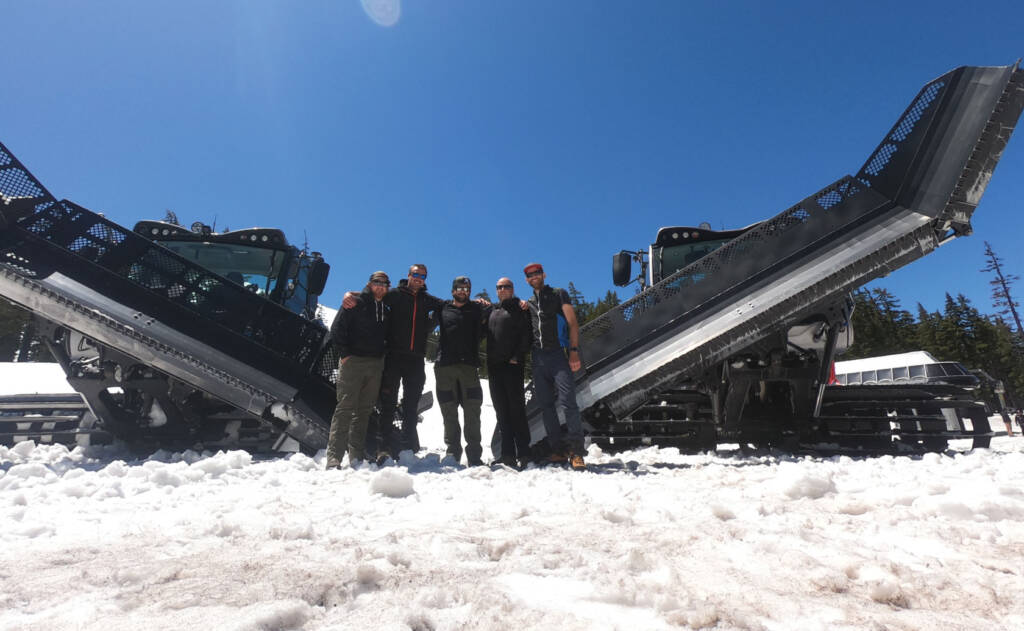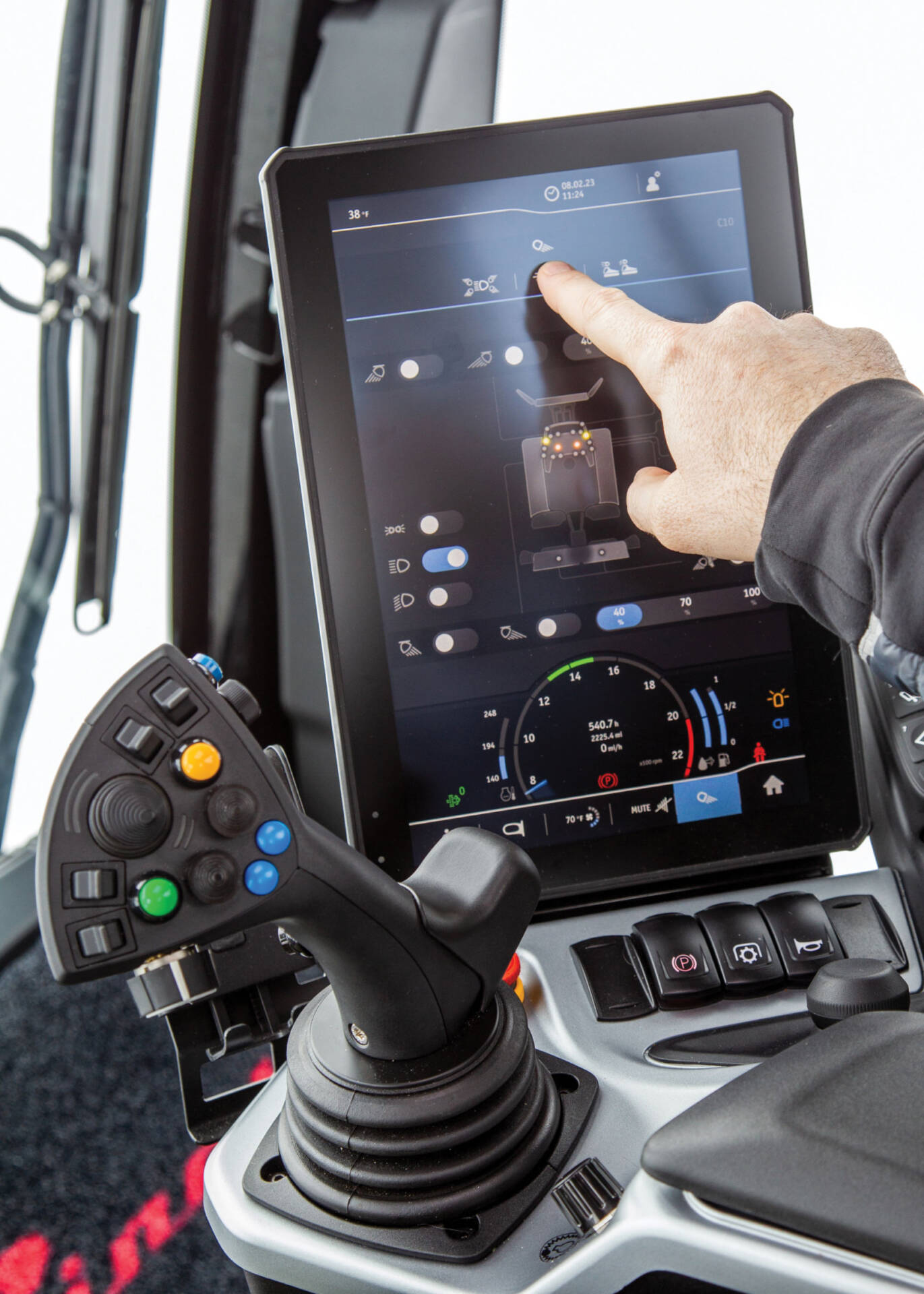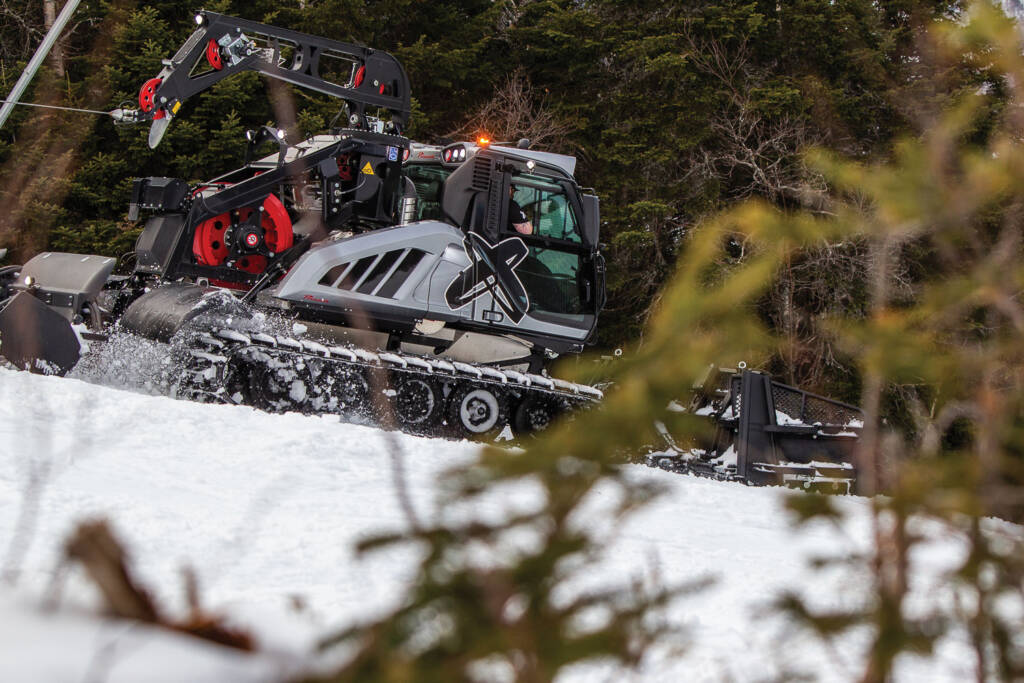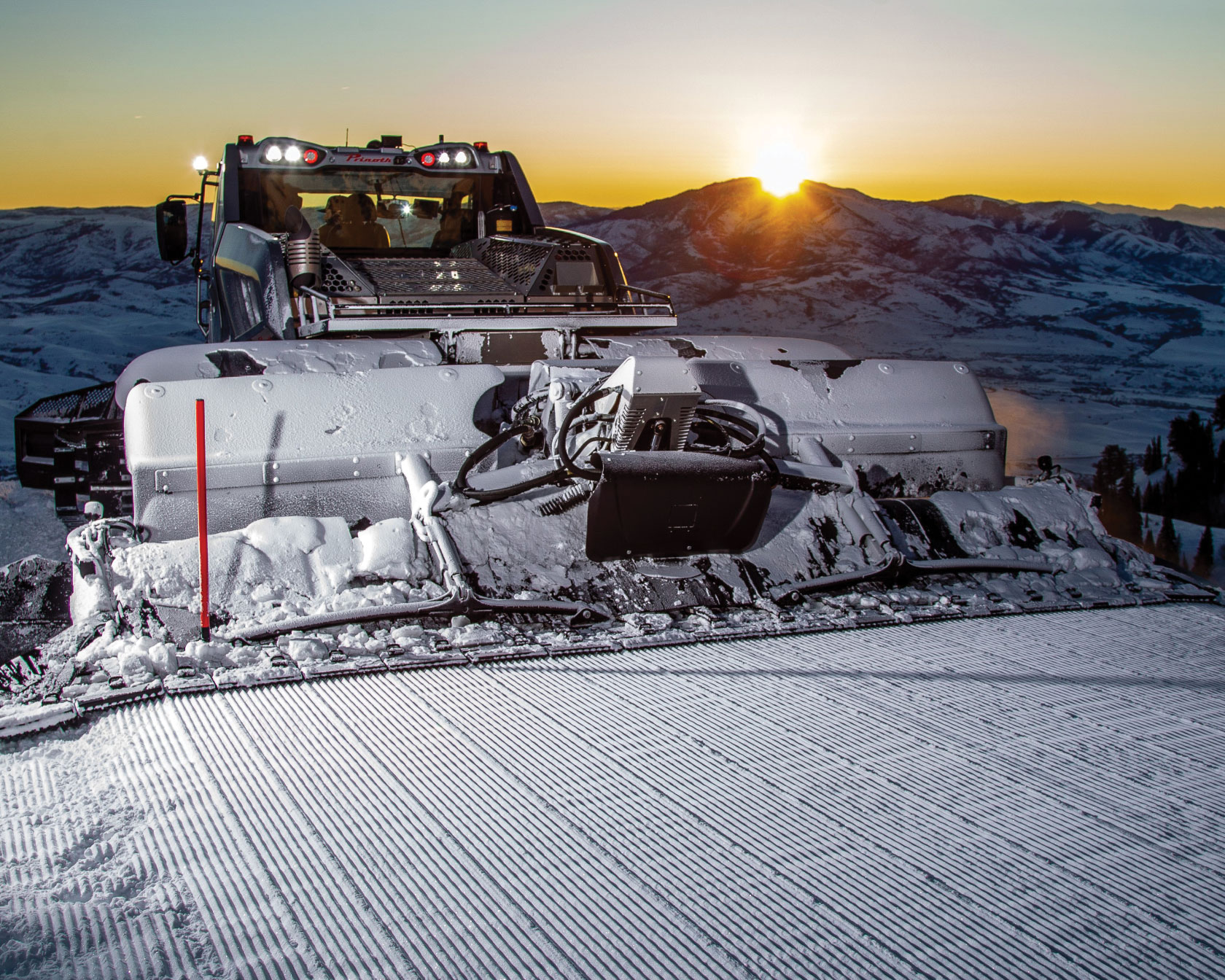The team at Prinoth collectively rolls their eyes when asked how they used to upgrade software on their snow groomers before the advent of Over-the-Air (OtA) methods.
“We used USB keys for a long time,” said Prinoth’s engineering manager for snow grooming North America Alexander Wood. With hundreds of vehicles spread out across numerous ski resort, he says the process “could take several weeks to complete.”
That all changed in 2022 when the company added new OtA methods to its machines. This enabled Prinoth to update the machines over the Internet so that the operator could then download and install. This technology change not only made it easier to install new software, but it also enabled Prinoth to test and develop new technologies more expediently across time zones and even countries.

Twice a year, Prinoth’s research and development, engineering and demo teams from North America and Europe convene for a week-long collaboration for software updates. These collaborations usually take place in the summer and fall, just before the new snow grooming season starts. These updates are more than just routine maintenance – they are strategic enhancements designed to keep the vehicles aligned with market demands and the evolving needs of their users.
In May, they gathered to develop their software updates, but this time, they created what they now call “the 24-hour innovation cycle.” This process was designed to deliver the best software solutions for its customers as swiftly as possible.
This new cycle capitalizes on the time difference between North America and Europe, allowing the teams to work around the clock, effectively doubling productivity within the same calendar time.
“Prinoth aims at developing the best solutions for its customers in the shortest possible time. The vehicles are complex, and the scenarios they have to face are endless. For these reasons, we always collaborate across the Atlantic to put together the different experiences and competencies,” said Francesco Salis, Prinoth’s coordinator of software development for snow groomers.

During the week-long collaboration, Prinoth’s team took their machines onto the snow, rigorously testing and identifying areas for improvement. This hands-on approach, fueled by customer feedback from the past season, allowed them to focus on real-world enhancements – from radio communication improvements to hydraulic speed matching and tiller customization.
At the end of each day, the North American team compiled their findings and sent them to their European counterparts. The engineers in Europe, headquartered in Vipiteno, Italy, worked overnight to create the necessary software updates.
These updates were then pushed back to the test machines in North America on the following morning. The daily back-and-forth not only maximized the efficiency of the development process, but also ensured that every minute of the week was spent advancing the project.
“The Pacific Time Zone is nine hours behind Central Europe and three behind Eastern,” said Salis. “The software development team is mostly based in the Central European time zone. This means that we could align with Italy before going to bed, defining the expected developments for the day.
“Our team spends a lot of time in the machines listening to customers. We take their feedback and ideas directly to the product development team, where they get flushed out and eventually tested through this process. So, everything we do is initiated by listening to the customer.”
Ben Finn, Prinoth
“At their noon, they aligned with the developer six hours behind them in the East Coast Time Zone to get his day started. In case we needed quick fixes during the day, we could rely on him. We aligned again with Italy during our breakfast at the end of their normal day to understand what had been done and what was missing to define our day. This meant that literally any minute during the week someone was actively working on software development.”
He says the biggest challenge is aligning and channeling information so the work is conducted as efficiently as possible. The team had long meetings in the morning and evening to plan all activities and to debrief at the end of the day. Cloud tools like shared notebooks allowed the team to work collaboratively on the same activity list, ensuring no information was lost.
Rachel Templar, marketing manager for snow grooming North America says the new cycle not only creates a quicker response time, but also enables the company “to access more staff from different areas to keep improving our equipment.”
DevOps Platform
Before the advent of this technology, it simply was not feasible to have so many people working on the same project simultaneously. Prinoth’s adoption of a DevOps platform – a tool that integrates the process of developing, securing and operating software into a single operation to enable collaboration – has revolutionized the way it develops and deploys software updates.

“Cloud technology facilitates rapid development thanks to the DevOps platform. It simplifies development, backlog management, source code versioning and the creation of test and release packages. Most importantly, it enables the sharing of information between teams, maximizing the effectiveness of every worked hour,” said Salis.
By integrating cloud tools, Prinoth has minimized the traditional barriers to software development, allowing for quick fixes, continuous testing and immediate deployment. The ability to push OtA updates ensures that every Stage V machine worldwide receives the latest software as soon as it’s released. This shift streamlines the updating process and empowers operators to perform updates independently, without requiring specialized tools or hardware.
The 2024 innovation cycle has already led to several significant improvements. Among them are adaptive controls for various vehicle functions, which eliminate the need for manual calibrations by allowing the system to learn the characteristics of its actuators.
As well, the responsiveness of the onboard screens has been enhanced, reducing startup times and improving the overall user experience. Operators now also can choose the responsiveness of vehicle functions, providing greater flexibility and control. These updates improve the machines’ functionality and address issues from previous versions, enhancing software’s stability and reliability.
“The vehicles are completely Operate-By-Wire. Almost no change in any vehicle behavior can occur without corresponding software changes. The bi-annual updates allow us to satisfy market demands and ensure the vehicles remain up-to-date and relevant,” said Salis.
Customer feedback
By incorporating feedback from the demo team and customers, Prinoth ensures that each update makes a tangible difference in snow groomers’ daily operations. Ben Finn, Prinoth’s demo and training manager, says these updates are customer-driven.

“Our team spends a lot of time in the machines listening to customers. We take their feedback and ideas directly to the product development team, where they get flushed out and eventually tested through this process. So, everything we do is initiated by listening to the customer.”
Quality control is at the heart of Prinoth’s software development process. Before any update is deployed, it undergoes rigorous testing and validation. Based on DevOps principles, this process involves detailed specifications, peer-reviewed code development and extensive testing on multiple vehicles under various conditions.
“The software development process requires testing of changes on test vehicles, conducted by different people to verify that vehicle behavior meets the acceptance criteria. Test vehicles run the software for hundreds of hours in different conditions, gathering continuous feedback. Once the target operation time is reached, the software undergoes a formal release validation process before it’s officially released,” Salis said.
This meticulous approach ensures that every update is reliable and thoroughly vetted, minimizing the risk of issues after deployment and maintaining high standards.
Although cloud technologies have made remote collaboration more effective, team members say there is still immense value in in-person meetings, where exchanging ideas and hands-on testing can drive innovation forward. The old days of using USB keys haven’t completely disappeared – they can still be used when there is poor connectivity or more complex updates required.
This global collaboration created through the 24-hour innovation cycle not only enriches the development process, but also ensures that Prinoth’s snow groomers are equipped to meet the diverse needs of their customers worldwide.

![[image placeholder]](https://www.snowopsmag.com/wp-content/uploads/2023/09/placeholder@2x-890x664.png)
